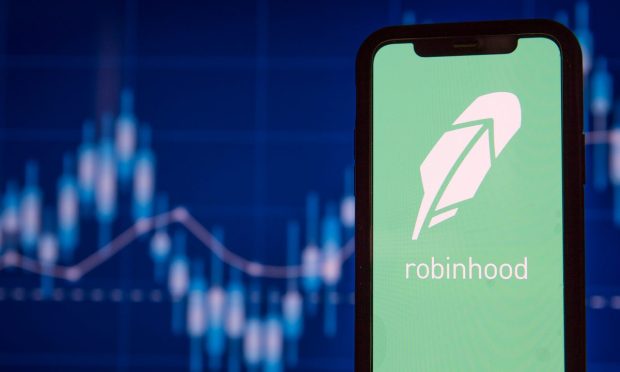Macro Pressures May Spark Long-Term Pullback From Robinhood’s Untested Retail Investors

The stimulus checks run out, the gambling stops. The meme stock becomes a meme — a cautionary tale about, and for, the retail investor. At least in this trading environment.
First, the numbers.
Robinhood Market’s revenues fell 43% in the most recent quarter.
That decline came as its monthly active user count — the people who use the platform, who trade the stocks, who pay the fees to Robinhood — declined, too, by 10% year over year to 15.9 million.
Read more: Robinhood Q1 Sees Fewer Retail Investors With Lower Account Balances Trading Less
Live by the transaction, die by the transaction.
Those headline numbers show some deeper, macro-influenced forces at work.
In remarks made on a conference call with analysts to discuss the earnings results, Chief Financial Officer Jason Warnick said that the company is moving beyond “hypergrowth.”
Yet, the firm is facing outright declines (which seems at odds with anything resembling hypergrowth, and which has led, in part, to Robinhood cutting 9% of its staff). Trading less often and putting up less money in each trade, indicates that the retail investors who are sticking with the platform either have less money at their disposal or are simply holding onto what they have.
As the CFO said, “they’re certainly paying attention to the macro environment.” That statement can run two ways. First, inflation and other macro considerations are impacting the companies in which Robinhood’s investors are trading — and uncertainty here is giving those individuals pause. Second, the macro environment is hitting investors’ own pocketbooks.
As CEO Vlad Tenev said, “this quarter was the story of two competing forces, our accelerating product development juxtaposed against a difficult macroeconomic climate.” Among those new products is an increase in the number of cryptocurrencies to trade, as well as the Robinhood cash card (where, interestingly, Robinhood expects to see 130 basis points of transaction volume and new revenues from interchange).
Gathering Headwinds
Management gave a direct shoutout to the headwinds gathering. For most of the company’s history, Robinhood has operated in a period of low interest rates, low inflation and rising markets.
But, said the CEO, “our customers are now experiencing all three of these trends going in the opposite direction, perhaps for the first time in their lives.” Net deposit levels are rising, the company has said, which indicates, perhaps, that some dry powder is being built up (customer cash was $9.2 billion, up 21% year on year).
But according to more granular detail given on the call about the trading activity, transaction-based revenues were $218 million for the quarter, down 48% year over year and 17% sequentially.
Equities revenue was $36 million, down 73% year over year and 31% sequentially. Customers placing trades were down 46% year over year, while notional volumes per trader were down 24%. Average revenue per user, as measured in the most recent quarter, stood at $53 — the target is the mid-$80s by the end of the year, according to management.
The company noted, too, that users are depositing funds and using the cash card for their day-to-day spending, using the paycheck auto invest feature to invest a portion of their paychecks into stocks and crypto.
But as PYMNTS’ data have noted, consumers are pulling back on their spending, focusing on the essentials. That signals that the dry powder may not grow us all that much — and may not get used anytime soon (not with all the volatility roiling markets). The fact that paychecks are ever more stretched, that savings are also being impacted, signals the pressures on stock trading may be pronounced and long lived.
Read more: 6 in 10 Consumers Buying Only the Essentials as Inflation Rises
